The automotive world is increasingly gravitating towards electric vehicles, and two noteworthy SUVs leading this charge are the Mercedes EQE SUV and the Porsche Macan. Both of these vehicles embody luxury, performance, and cutting-edge technology, appealing to enthusiasts and eco-conscious drivers alike. In this comparison, we will delve into the technical aspects and innovations incorporated into these extraordinary machines.
Mercedes EQE SUV vs Porsche Macan – Performance, range & efficiency compared
Two cars, one duel: Mercedes EQE SUV meets Porsche Macan.
Which one wins in performance, efficiency and value for money? Find out now!
Design and Dimensions
The Mercedes EQE SUV stands at a length of 4863 mm, making it slightly longer than the Porsche Macan, which measures 4784 mm. While both vehicles feature an SUV body type, the EQE boasts a more pronounced width at 1940 mm compared to the Macan's 1938 mm. Height-wise, the EQE SUV is taller, ranging from 1685 mm to 1672 mm, providing a commanding road presence and enhanced cabin space.
Powertrain and Performance
Under the hood, the EQE SUV offers a range of power options with outputs ranging from 245 HP to a remarkable 625 HP, demonstrating a focus on versatility. The vehicle supports both rear-wheel drive and all-wheel drive configurations and accelerates from 0 to 100 km/h in as little as 3.7 seconds for the highest-spec model. In contrast, the Porsche Macan packs a powerful punch as well, with power options from 360 HP to an astounding 639 HP, pushing it to 100 km/h in just 3.3 seconds for the sportiest variant.
Battery Capacity and Electric Range
Battery capacity is an essential consideration for electric SUVs. Both the EQE SUV and the Macan are equipped with 96 kWh batteries. However, the EQE offers a slightly superior electric range, with a maximum of 614 km compared to the Macan's best of 644 km. This offers potential buyers a unique choice depending on their driving habits and range needs.
Efficiency and Consumption
As environmental concerns are at the forefront of many consumers' minds, efficiency is a critical metric to consider. The Mercedes EQE SUV has an energy consumption rating ranging from 18.2 to 23.2 kWh/100 km, while the Porsche Macan offers a more consistent consumption rate of between 17 to 18.8 kWh/100 km. Both vehicles boast an impressive CO2 efficiency class of “A,” making them eco-friendly choices for the modern driver.
Interior Comfort and Technology
Inside, both SUVs offer luxurious five-seat configurations, catering to passenger comfort and convenience. The EQE SUV emphasizes cutting-edge technology, featuring the MBUX infotainment system, a large digital display, and driver assistance systems that enhance both usability and safety. The Macan, known for its sporty flair, combines high-quality materials with an intuitive infotainment setup to deliver an engaging driving experience.
Storage and Practicality
When it comes to practicality, both vehicles provide generous trunk space. The EQE SUV has a trunk capacity of 520 liters, making it versatile for everyday use. The Porsche Macan, although slightly less spacious with 540 liters, does not skimp on practicality, ensuring that it meets the needs of active lifestyles.
Conclusion: The Final Verdict
In the battle of luxury electric SUVs, the Mercedes EQE SUV and Porsche Macan shine for different reasons. The EQE SUV scores highly with its extended range, advanced technology, and luxurious focus, whereas the Macan emphasizes sporty performance and driving dynamics. Ultimately, the choice between these exceptional vehicles will depend on individual preferences regarding performance versus practicality and technology.
Here’s where it gets real: The technical differences in detail
Costs and Efficiency:
When it comes to price and running costs, the biggest differences usually appear. This is often where you see which car fits your budget better in the long run.
Porsche Macan has a slight advantage in terms of price – it starts at 69200 £, while the Mercedes EQE SUV costs 71600 £. That’s a price difference of around 2382 £.
In terms of energy consumption, the advantage goes to the Porsche Macan: with 17 kWh per 100 km, it’s barely noticeable more efficient than the Mercedes EQE SUV with 18.30 kWh. That’s a difference of about 1.30 kWh.
As for range, the Porsche Macan performs barely noticeable better – achieving up to 644 km, about 33 km more than the Mercedes EQE SUV.
Engine and Performance:
Under the bonnet, it becomes clear which model is tuned for sportiness and which one takes the lead when you hit the accelerator.
When it comes to engine power, the Porsche Macan has a hardly perceptible edge – offering 639 HP compared to 625 HP. That’s roughly 14 HP more horsepower.
In acceleration from 0 to 100 km/h, the Porsche Macan is to a small extent quicker – completing the sprint in 3.30 s, while the Mercedes EQE SUV takes 3.70 s. That’s about 0.40 s faster.
In terms of top speed, the Porsche Macan performs hardly perceptible better – reaching 260 km/h, while the Mercedes EQE SUV tops out at 240 km/h. The difference is around 20 km/h.
There’s also a difference in torque: Porsche Macan pulls to a small extent stronger with 1130 Nm compared to 950 Nm. That’s about 180 Nm difference.
Space and Everyday Use:
Cabin size, boot volume and payload all play a role in everyday practicality. Here, comfort and flexibility make the difference.
Both vehicles offer seating for 5 people.
In curb weight, Porsche Macan is hardly perceptible lighter – 2295 kg compared to 2440 kg. The difference is around 145 kg.
In terms of boot space, the Porsche Macan offers barely noticeable more room – 540 L compared to 520 L. That’s a difference of about 20 L.
In maximum load capacity, the Mercedes EQE SUV performs slightly better – up to 1675 L, which is about 327 L more than the Porsche Macan.
When it comes to payload, Mercedes EQE SUV barely noticeable takes the win – 580 kg compared to 545 kg. That’s a difference of about 35 kg.
Who comes out on top?
Overall, the Porsche Macan shows itself to be slightly ahead and secures the title of DriveDuel Champion.
It convinces with the more balanced overall package and proves to be the more versatile choice for everyday use.
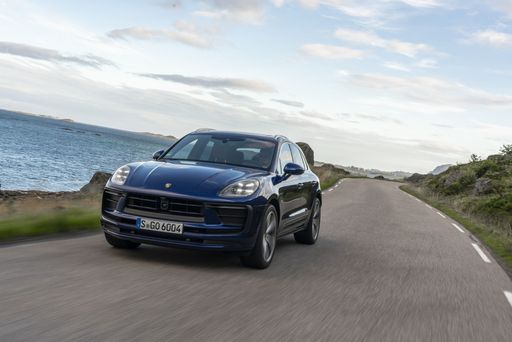 @ Dr. Ing. h.c. F. Porsche AG
@ Dr. Ing. h.c. F. Porsche AG
Porsche Macan
Mercedes EQE SUV
The Mercedes-Benz EQE SUV represents a fusion of advanced electric mobility and luxurious design, offering a refined driving experience that aligns with the brand's renowned legacy. Inside, the cabin is adorned with high-quality materials and state-of-the-art technology, providing both comfort and functionality for modern drivers. Its dynamic exterior is crafted to enhance aerodynamics while maintaining a distinctive and elegant presence on the road.
details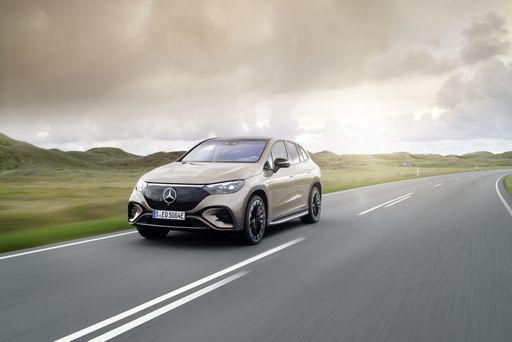 @ Mercedes-Benz Group Media
@ Mercedes-Benz Group Media
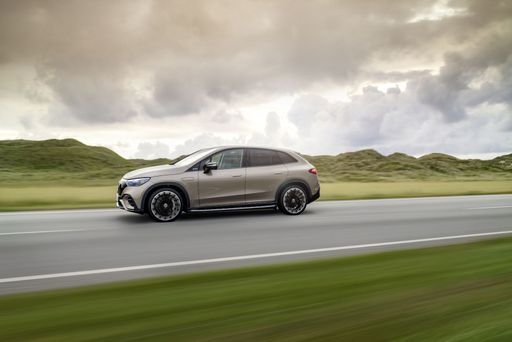 @ Mercedes-Benz Group Media
@ Mercedes-Benz Group Media
 @ Mercedes-Benz Group Media
@ Mercedes-Benz Group Media
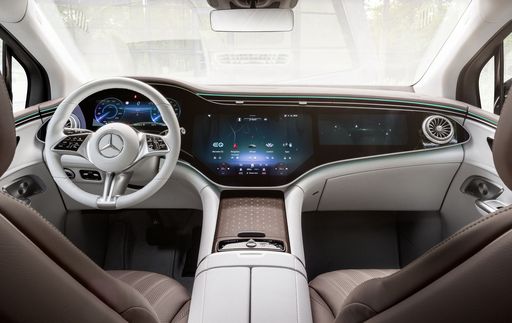 @ Mercedes-Benz Group Media
@ Mercedes-Benz Group Media
Porsche Macan
The Porsche Macan feels like a compact sports car dressed in SUV clothes, delivering razor-sharp handling and a cabin that somehow mixes luxury with everyday practicality. For buyers who crave driving thrills without sacrificing usability, the Macan is a rare breed that makes running errands feel like a weekend blast and manages to look smugly good in the process.
details @ Dr. Ing. h.c. F. Porsche AG
@ Dr. Ing. h.c. F. Porsche AG
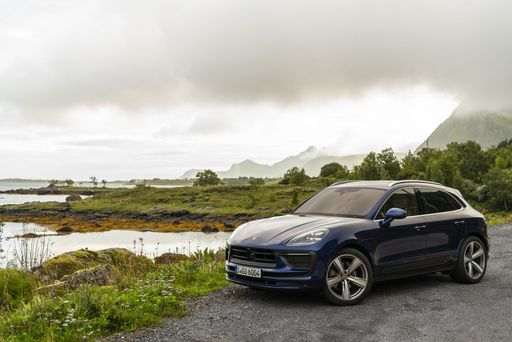 @ Dr. Ing. h.c. F. Porsche AG
@ Dr. Ing. h.c. F. Porsche AG
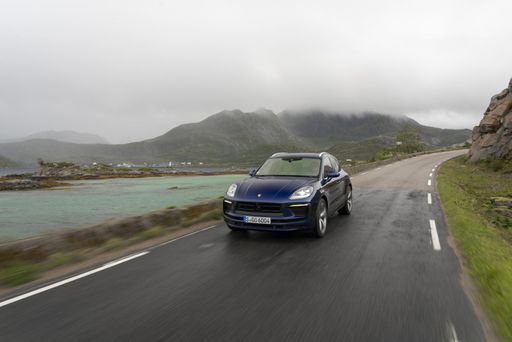 @ Dr. Ing. h.c. F. Porsche AG
@ Dr. Ing. h.c. F. Porsche AG
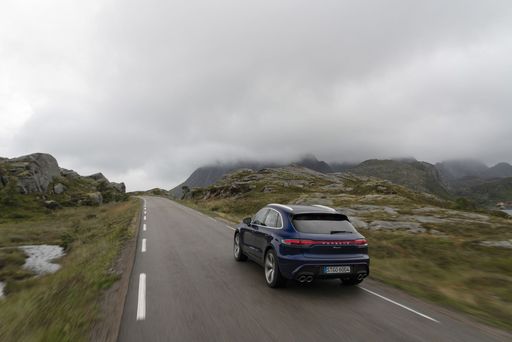 @ Dr. Ing. h.c. F. Porsche AG
@ Dr. Ing. h.c. F. Porsche AG
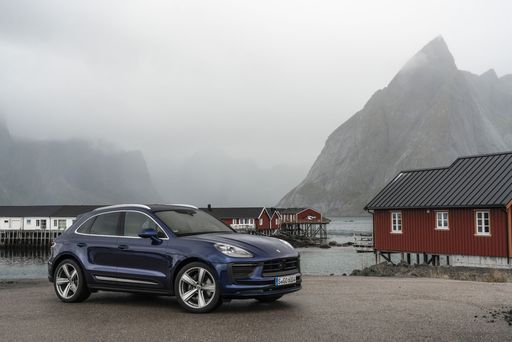 @ Dr. Ing. h.c. F. Porsche AG
@ Dr. Ing. h.c. F. Porsche AG
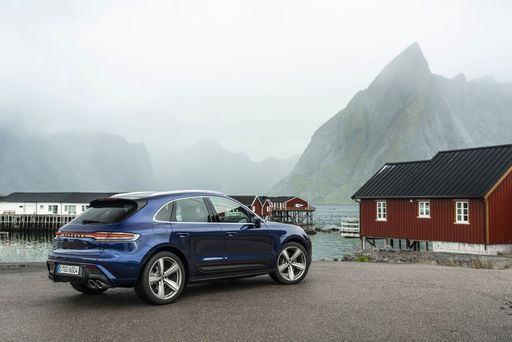 @ Dr. Ing. h.c. F. Porsche AG
@ Dr. Ing. h.c. F. Porsche AG
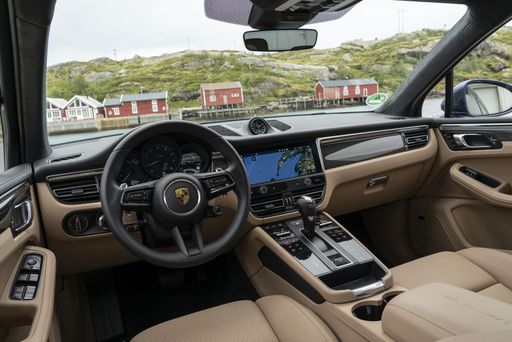 @ Dr. Ing. h.c. F. Porsche AG
@ Dr. Ing. h.c. F. Porsche AG
 @ Mercedes-Benz Group Media
@ Mercedes-Benz Group Media
|
 @ Dr. Ing. h.c. F. Porsche AG
@ Dr. Ing. h.c. F. Porsche AG
|
|
|
|
Costs and Consumption |
|
|---|---|
|
Price
71600 - 125100 £
|
Price
69200 - 99000 £
|
|
Consumption L/100km
-
|
Consumption L/100km
-
|
|
Consumption kWh/100km
18.3 - 23.1 kWh
|
Consumption kWh/100km
17 - 18.5 kWh
|
|
Electric Range
453 - 611 km
|
Electric Range
585 - 644 km
|
|
Battery Capacity
90.5 - 96 kWh
|
Battery Capacity
95 kWh
|
|
co2
0 g/km
|
co2
0 g/km
|
|
Fuel tank capacity
-
|
Fuel tank capacity
-
|
Dimensions and Body |
|
|---|---|
|
Body Type
SUV
|
Body Type
SUV
|
|
Seats
5
|
Seats
5
|
|
Doors
4
|
Doors
5
|
|
Curb weight
2440 - 2615 kg
|
Curb weight
2295 - 2470 kg
|
|
Trunk capacity
520 L
|
Trunk capacity
476 - 540 L
|
|
Length
4863 - 4879 mm
|
Length
4784 - 4805 mm
|
|
Width
1940 mm
|
Width
1938 - 1952 mm
|
|
Height
1672 - 1685 mm
|
Height
1613 - 1623 mm
|
|
Max trunk capacity
1675 L
|
Max trunk capacity
1288 - 1348 L
|
|
Payload
505 - 580 kg
|
Payload
470 - 545 kg
|
Engine and Performance |
|
|---|---|
|
Engine Type
Electric
|
Engine Type
Electric
|
|
Transmission
Automatic
|
Transmission
Automatic
|
|
Transmission Detail
Reduction Gearbox
|
Transmission Detail
Reduction Gearbox
|
|
Drive Type
All-Wheel Drive, Rear-Wheel Drive
|
Drive Type
Rear-Wheel Drive, All-Wheel Drive
|
|
Power HP
265 - 625 HP
|
Power HP
360 - 639 HP
|
|
Acceleration 0-100km/h
3.7 - 7.1 s
|
Acceleration 0-100km/h
3.3 - 5.7 s
|
|
Max Speed
210 - 240 km/h
|
Max Speed
220 - 260 km/h
|
|
Torque
550 - 950 Nm
|
Torque
563 - 1130 Nm
|
|
Number of Cylinders
-
|
Number of Cylinders
-
|
|
Power kW
195 - 460 kW
|
Power kW
265 - 470 kW
|
|
Engine capacity
-
|
Engine capacity
-
|
General |
|
|---|---|
|
Model Year
2023 - 2025
|
Model Year
2024 - 2025
|
|
CO2 Efficiency Class
A
|
CO2 Efficiency Class
A
|
|
Brand
Mercedes-Benz
|
Brand
Porsche
|
What drive types are available for the Mercedes EQE SUV?
Available configurations include All-Wheel Drive or Rear-Wheel Drive.
The prices and data displayed are estimates based on German list prices and may vary by country. This information is not legally binding.
